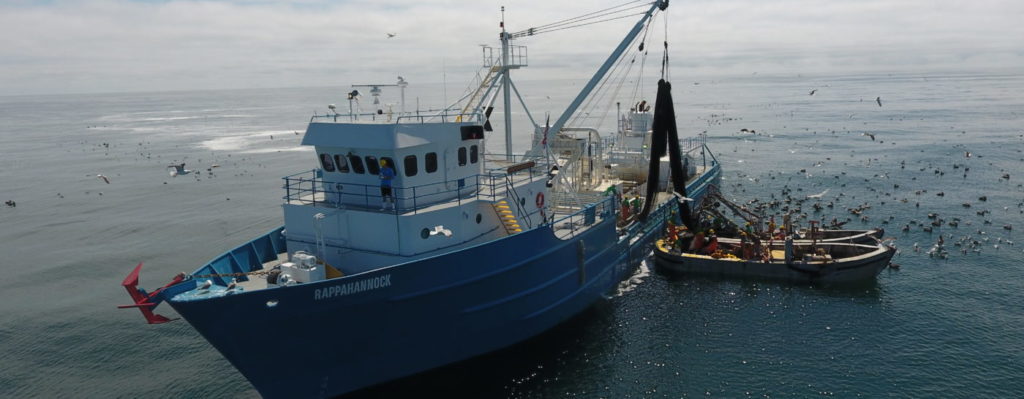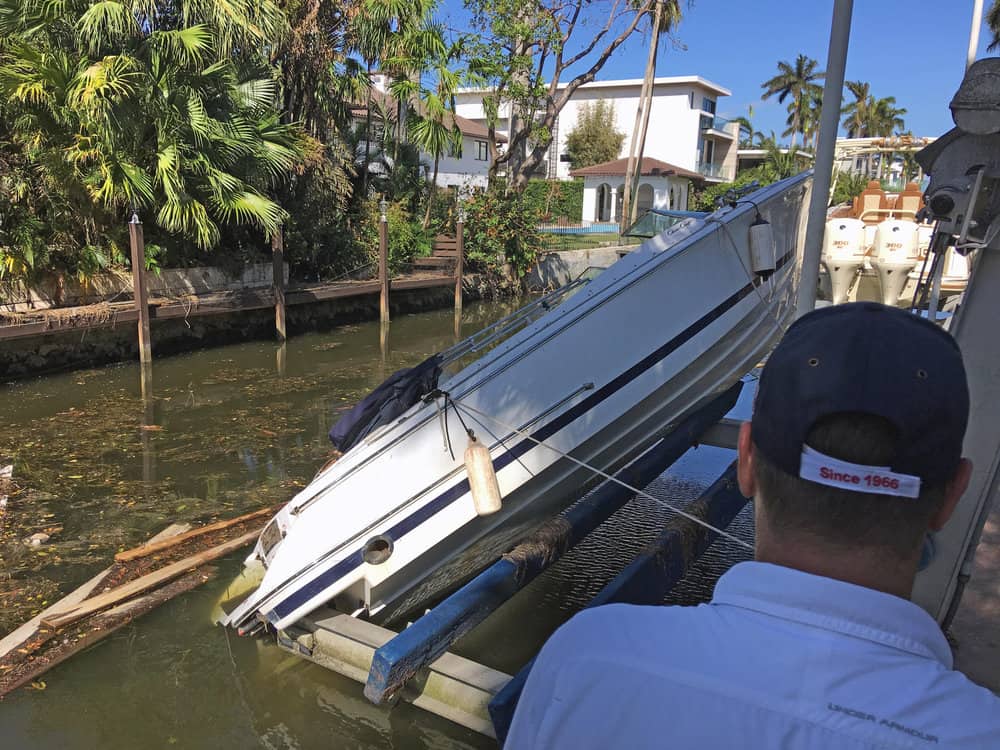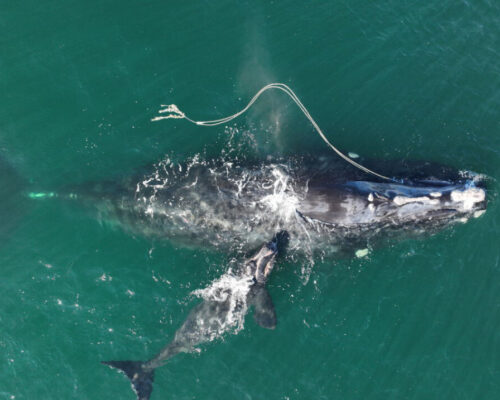The problem of torn nets and fish spills is at the forefront of the menhaden conservation debate this week, after it was reported that Omega Protein spilled some 400,000 fish into the Bay last week.
In a letter to Omega dated Sept. 8, Virginia Marine Resources Commissioner (VMRC) Steve Bowman writes, “I am concerned with the frequency of fish kills/spills that have occurred during Omega’s prosecution of the menhaden fishery … Over the past four years (2018 to present) we have received 13 reports of fish spills by your company, averaging 121,000 fish per spill event.”
The menhaden processer has a large fishery based in Reedville, Va., along with its corporate headquarters and the 260-employee facility producing fish oil and fish meal from menhaden. The small, oily fish is also a key piece of the food chain in and around the Bay, eaten by predators like rockfish, osprey, and bald eagles. Chesapeake Bay Foundation proclaims menhaden “the most important fish in the Bay” and the Atlantic coast fishery is carefully monitored by fishery managers.
Responding to VMRC in a letter Friday morning, Omega Protein’s Monty Deihl says in that fish spills are rare, but do happen. Company spokesman Ben Landry says that Omega boats have an average of three or four spills out of 2,500 sets per year.
In his response to Bowman, Deihl explains that spills happen most often when harvested fish are being pumped from the net onto the “mother vessel” and the net is ballooned out around the boat. The boat is adrift with the tides, and the net underneath it may become entangled on something protruding from the seabed. Deihl says that often, boat crews don’t see the net tear until the pumping is finished and the net is retrieved.
He says 10 years ago, Omega began “proactively notifying VMRC of a net tear to alert them of a potential loss of some menhaden.” When a net tear occurs, he says, Omega’s spotter pilots monitor for dead fish in the days following the spill and clean up the fish from any beaches where they wash ashore.
In this case, Landry tells Bay Bulletin that spotters estimated about 75,000 fish were seen floating, washed into the middle of the Bay “and were likely consumed by predators.” The remainder were either released alive or were also eaten by predators, Landry says.
Right now, spilled fish do not count towards Omega’s catch limits. But in his letter Bowman warns that if frequent fish spills continue, an amendment could be added to the menhaden regulations that would count fish spill volume towards Omega’s quota.
Chesapeake Bay Foundation Senior Regional Ecosystem Scientist Chris Moore criticized the spill in a press statement:
“What an unfortunate waste of a precious Chesapeake Bay resource. Allowing hundreds of thousands of dead fish to go to waste and pollute our waters is not only irresponsible, it is another environmental failure by frequent violator Omega Protein. Rather than nourishing striped bass and whales, Omega Protein spilled 400,000 menhaden that could rot and foul beaches and waterways on a late summer weekend. Everyone in Hampton Roads should be on the lookout for dead fish in the water and report sightings to VMRC.
VMRC and CBF also called Omega out for their frequency of fishing inside the Bay. In addition to the Atlantic coastwide quote for catching menhaden in the ocean, there is a “Bay cap” that limits how much Omega can catch in the Chesapeake. Omega says it has reached 85 percent of its Bay allowance—which VMRC points out is a similar pace to this time in 2019, when the fish processor ultimately exceeded the limit.
But the company defends its Bay cap status, saying they would never intentionally exceed the cap, and they are closely tracking landings.
-Meg Walburn Viviano




